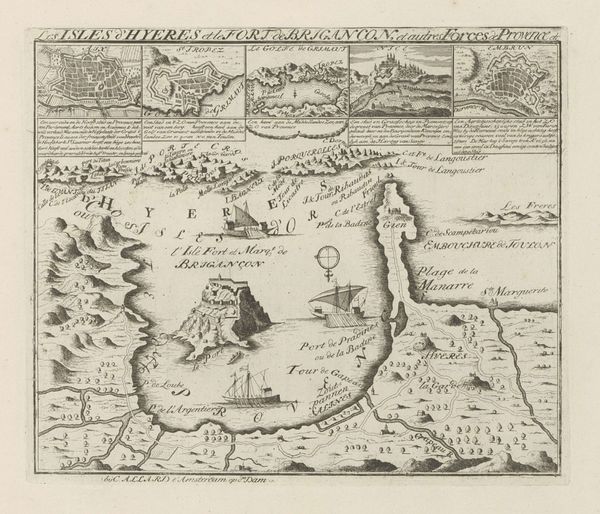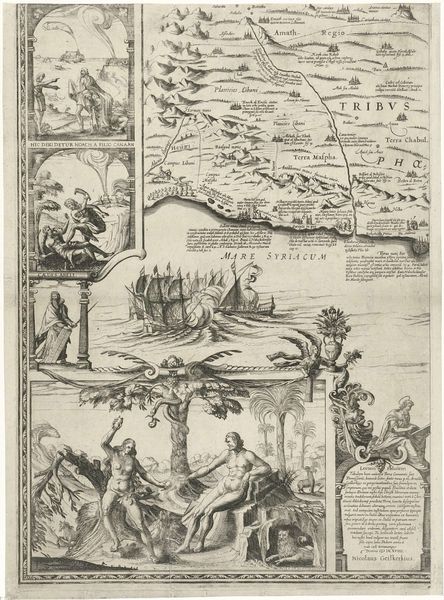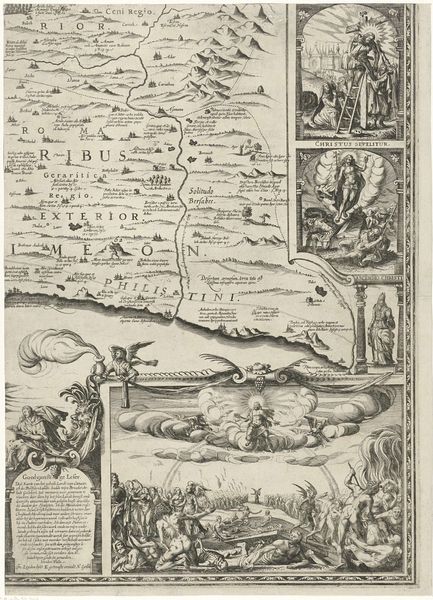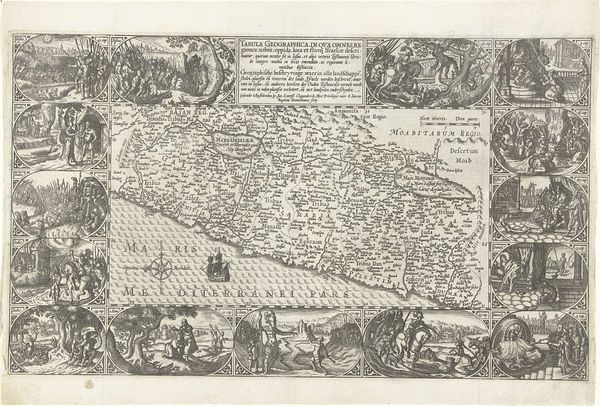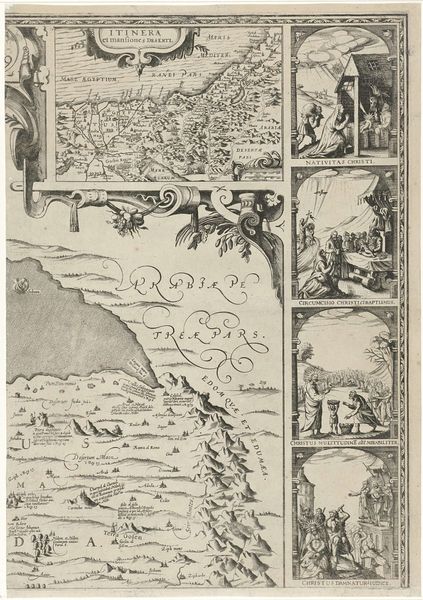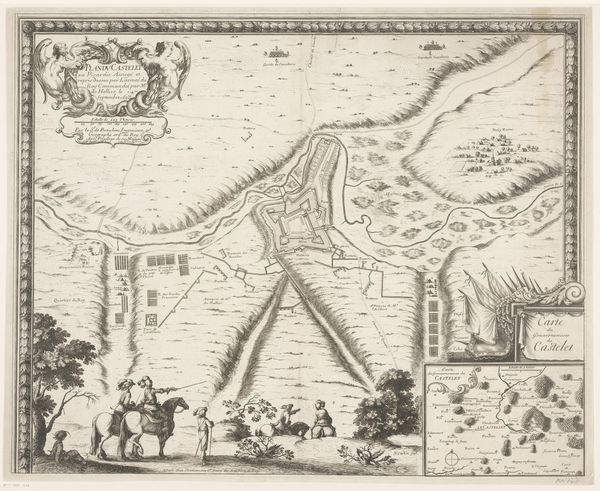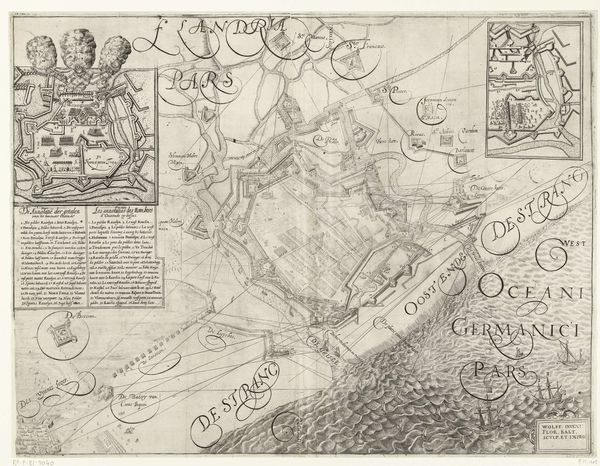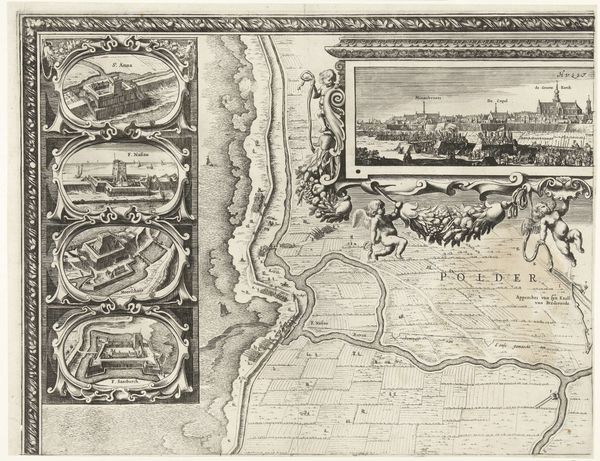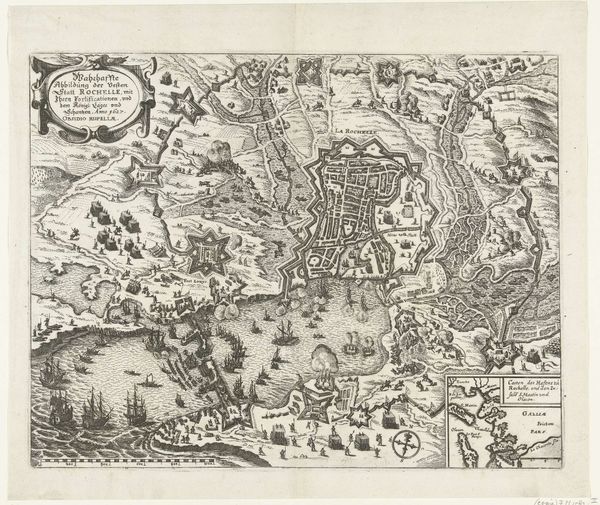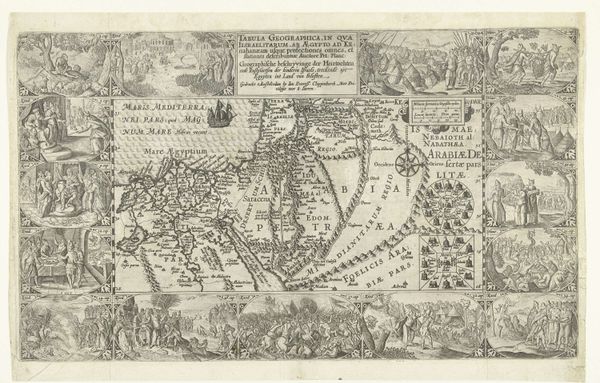
drawing, print, engraving
#
drawing
# print
#
landscape
#
geometric
#
history-painting
#
engraving
Dimensions: width 389 mm, height 546 mm
Copyright: Rijks Museum: Open Domain
Curator: Here we have Nicolaes van Geelkercken’s "Map of Palestine," dating back to 1621. It's currently part of the Rijksmuseum’s collection, created using engraving techniques on both drawing and print mediums. Editor: Well, that’s fascinating! My immediate reaction is how powerfully this blends what we would consider cartography with, well, storytelling. It feels like a comic book rendering of Biblical tales over the geography! Curator: Indeed, observe how Geelkercken combines meticulous mapping with illustrative narratives. Along the left, you’ll see vignettes: David slaying Goliath, Moses and the Tablets, the Sacrifice of Abraham, even the Tower of Babel. These aren’t just decoration. They are integral to the symbolic meaning, aren't they? Editor: Absolutely. They establish Palestine not merely as a physical location, but as the epicentre of sacred history and mythos, a landscape forged by momentous events and divine intervention. The style has this very intentional anachronism in layering Biblical stories, some that are deeply embedded within memory—even subconscious—with more traditional map-making. It adds an emotional weight. Curator: Precisely! The map becomes a palimpsest, layered with cultural memories and theological assertions. Notice too the orientation, its symbolic weight of directions at play even. The choice of typography alone makes a statement. The script embodies its historical period as well. Editor: It reminds me how even supposed objective representations like maps are deeply imbued with the values, beliefs, and biases of their time. Every line, every scene selection, whispers volumes about what the mapmaker, and by extension their society, deemed important about this land. It’s less about geography and more about history. Or really it's about belief manifesting in history. Curator: Yes, these are not passive records; these images and artistic elements play a key role. And given the religious fervour of the period, understanding those stories would likely have shaped not just how people understood geography but also their very identity. Editor: Thinking about the journey a piece like this took! All the hands that passed it to where it now resides safely! It speaks to both how deeply ingrained cartography is in understanding ourselves, but it also hints at where we are heading. Pretty stunning. Curator: Quite right. Geelkercken provides us not merely a map but a cultural mirror.
Comments
No comments
Be the first to comment and join the conversation on the ultimate creative platform.
